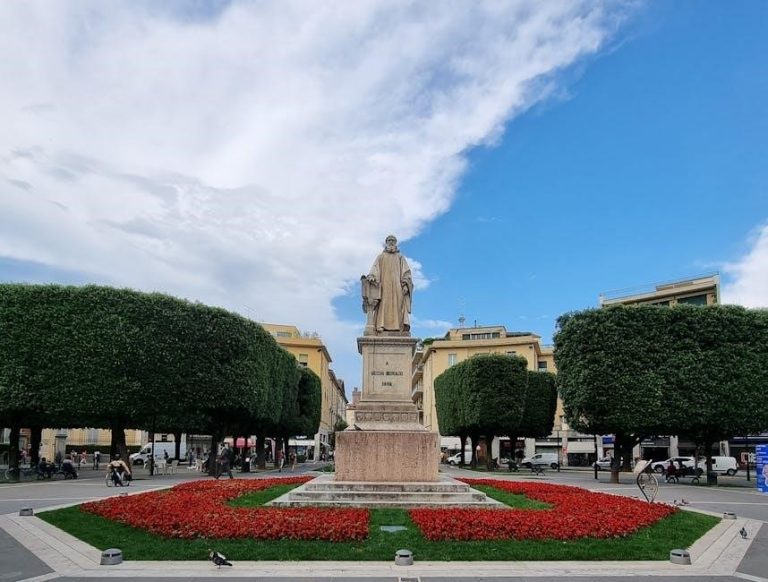Guido Orefice, a character from “Life is Beautiful,” embodies resilience and hope during WWII. His story, portrayed by Roberto Benigni, highlights the power of humor and optimism in the face of adversity.
Overview of Guido Orefice
Guido Orefice, a Jewish man living in Tuscany during the onset of World War II, is a central character in the film Life is Beautiful. Known for his big-hearted nature and relentless optimism, Guido is portrayed as a man who uses humor and imagination to navigate life’s challenges. He resides with his uncle and works as a waiter, showcasing his charming and resourceful personality. Guido’s life takes a dramatic turn when he meets a schoolteacher, Dora, whom he marries, and they have a son, Giosuè. As the war intensifies, Guido’s family is deported to a concentration camp, where he uses his wit and creativity to shield his son from the harsh realities of their situation. His ability to find beauty and hope in the darkest of times makes him a symbol of resilience and humanity.
Significance in Historical Context
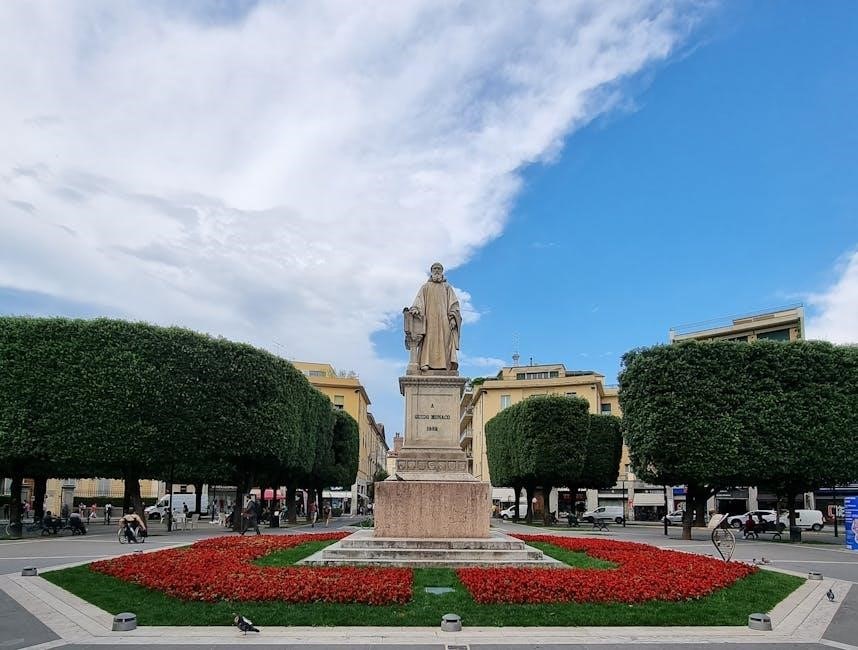
Guido Orefice’s story, set against the backdrop of World War II, underscores the resilience of the human spirit during one of history’s darkest periods. As a Jewish man in Nazi-occupied Italy, Guido’s experiences reflect the broader struggles of Jewish communities facing persecution. His character serves as a symbol of hope and defiance, using humor and creativity to survive the atrocities of the Holocaust. Guido’s ability to maintain optimism and protect his son from the harsh realities of their situation highlights the strength of the human will. His story not only humanizes the victims of the Holocaust but also emphasizes the importance of preserving dignity and humanity in the face of unimaginable suffering. Through Guido’s journey, the film sheds light on the emotional and psychological impact of war, making his character a powerful reminder of the enduring spirit of resilience and hope.
Background
Guido Orefice, a kind-hearted Jewish man, lived in Tuscany with his uncle during the early years of World War II. His early life shaped his optimism and imaginative personality, which later influenced his actions during the war.
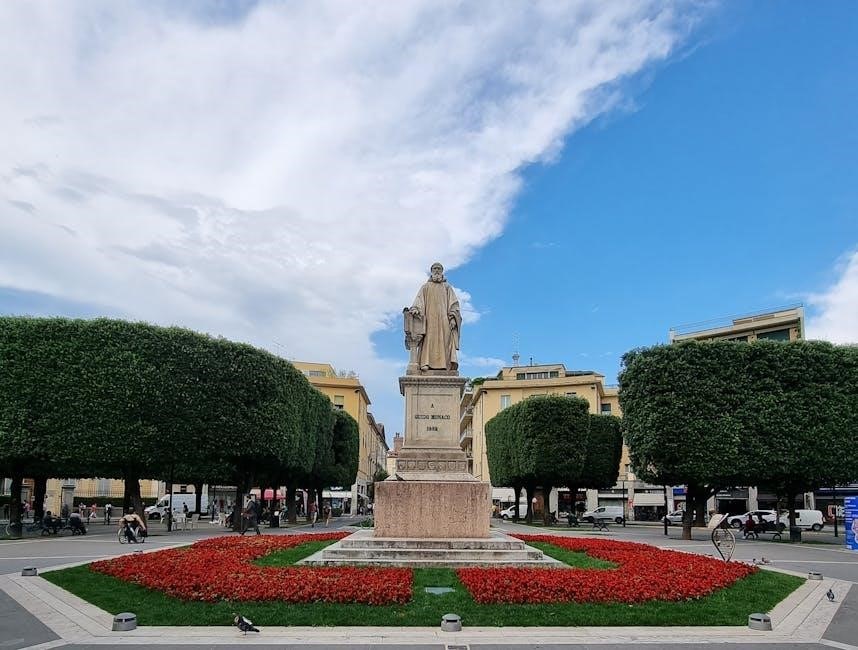
Early Life and Family
Guido Orefice was born into a Jewish family in Arezzo, Italy. His early life was marked by a loving family environment and a strong sense of community. Guido’s father, despite financial struggles, instilled in him the importance of kindness and humor. His mother, a pillar of emotional support, played a crucial role in shaping Guido’s optimistic outlook. Growing up, Guido developed a creative and imaginative personality, which he expressed through storytelling and humor. These traits were inspired by his family’s warmth and resilience. Guido’s close relationship with his uncle, with whom he later lived, further influenced his strong moral compass and ability to find joy in simple moments. His early life laid the foundation for the resourcefulness and positivity that defined him during the challenges of World War II;
Cultural and Social Influences
Guido Orefice’s life was deeply shaped by the cultural and social fabric of his small Italian town. Growing up in Tuscany, he was surrounded by a tight-knit community that valued tradition and simplicity. The Jewish heritage of his family played a significant role in his identity, instilling in him a strong sense of resilience and moral integrity. The social dynamics of pre-war Italy, with its vibrant culture and close family ties, influenced Guido’s optimistic outlook and creative spirit. His ability to find humor and beauty in everyday life reflected the broader Italian values of joy and resourcefulness. However, the rising tensions of World War II and the increasing persecution of Jewish communities also shaped his experiences, forcing him to navigate a world of contrasts between hope and hardship.
Personality Traits and Characteristics
Guido Orefice is a man of remarkable optimism, resilience, and creativity. His ability to find humor and beauty in even the darkest situations defines his character. Guido is resourceful and determined, often relying on his wit and imagination to overcome challenges. His unwavering positivity helps him protect his son, Giosuè, from the harsh realities of their circumstances. Guido’s humor serves as a coping mechanism, making him both relatable and endearing. He is a natural storyteller, using his charm to create a sense of normalcy in extreme conditions. His deep love for his family drives his actions, showcasing his selflessness and devotion. Guido’s personality is a blend of hope, humor, and humanity, making him a memorable and inspiring figure in the face of adversity.
Role in the Movie “Life is Beautiful”
Guido Orefice is a protective father who uses humor and imagination to shield his son from the horrors of WWII, embodying hope and resilience in the face of despair.
Portrayal by Roberto Benigni
Roberto Benigni’s portrayal of Guido Orefice in “Life is Beautiful” is a masterclass in blending humor with pathos. His performance captures Guido’s creativity, optimism, and unwavering love for his family. Benigni’s physical comedy and expressive acting bring depth to the character, making him both relatable and inspiring. His ability to convey hope amidst despair earned him widespread acclaim, including an Academy Award for Best Actor. Benigni’s interpretation of Guido not only humanizes the character but also underscores the film’s central themes of resilience and love. His performance is widely regarded as one of the most memorable in cinema history, leaving a lasting impression on audiences worldwide.
Narrative Function in the Storyline
Guido Orefice serves as the emotional and narrative cornerstone of “Life is Beautiful.” His imagination and resourcefulness drive the plot, transforming the bleak reality of a concentration camp into a fantastical game to shield his son, Giosuè, from the horrors of their situation. Through his antics and humor, Guido creates a protective bubble of hope and normalcy, allowing Giosuè to maintain innocence despite the oppressive surroundings. His unwavering optimism and love for his family inspire those around him, making him a symbol of resilience. Guido’s narrative function is to exemplify how the human spirit can endure even in the darkest times, using creativity and humor as tools of survival. His actions and decisions propel the story forward, ensuring the film’s themes of hope and humanity remain central to the narrative.
Key Scenes and Dialogues
Guido Orefice’s most memorable moments in “Life is Beautiful” are marked by his creativity and unwavering optimism. A pivotal scene occurs when he first meets Dora, showcasing his charming and playful nature. Another impactful moment is when he and his son, Giosuè, arrive at the concentration camp. Guido transforms the brutal reality into a game, telling Giosuè they are on a mission to earn points for a tank. This narrative device highlights his protective love and imagination. A heart-wrenching scene follows as Guido sacrifices himself to ensure Giosuè’s survival, embodying his selfless devotion. A memorable dialogue is when he says, “We’ll get out, because the worst has already happened, and the worst is terrible, but we’re here, and we have to keep hoping.” These scenes and lines underscore Guido’s resilience, humor, and love, making him a timeless cinematic figure.
Historical Context
Set during World War II, Guido Orefice’s story unfolds amidst the Nazi regime’s persecution of Jews, highlighting the era’s atrocities and the resilience of those affected.
Setting During World War II
Guido Orefice’s story in “Life is Beautiful” is set against the backdrop of World War II, a time of immense turmoil and tragedy. The film begins in Tuscany, Italy, where Guido, a Jewish man, lives a peaceful life with his uncle. However, the onset of the war and the Nazi occupation disrupt his idyllic existence. The narrative transitions to a concentration camp, where Guido and his son Giosuè are imprisoned. The camp serves as a grim reminder of the atrocities committed during the Holocaust, with its harsh conditions and dehumanizing treatment of prisoners. Despite the horrors, Guido’s imagination and humor provide a refuge, creating a fictional narrative to protect his son from the harsh realities. The film’s portrayal of the camp underscores the historical context of Jewish persecution while infusing it with a message of hope and resilience. Roberto Benigni’s direction ensures that the setting is both authentic and emotionally impactful, balancing the darkness of the era with the light of human spirit.
Impact of War on Jewish Communities
The impact of World War II on Jewish communities was devastating, as depicted through Guido Orefice’s journey. The Holocaust brought systematic persecution, with Jewish individuals facing forced relocation, confiscation of property, and eventual imprisonment in concentration camps. Guido, a Jewish man living in Tuscany, experiences the gradual erosion of his freedoms, reflecting the broader plight of Jewish communities across Europe. The war disrupted families, destroyed livelihoods, and erased entire neighborhoods, leaving a profound emotional and cultural scar. The film highlights the dehumanizing conditions of the camps, where millions of Jews were subjected to forced labor, starvation, and brutal treatment. Despite the atrocities, stories like Guido’s emphasize the resilience of Jewish communities, who, even in the face of unimaginable suffering, found ways to preserve their identity and hope. The historical context underscores the irreparable loss and enduring trauma inflicted by the war on Jewish populations worldwide.
Historical Accuracy in the Film
“Life is Beautiful” blends humor with the harsh realities of World War II, offering a unique perspective on the Holocaust. While the film takes creative liberties, it captures the emotional and psychological impact of the war on Jewish communities. The depiction of Guido’s journey reflects the historical context of Jewish persecution, forced labor camps, and the dehumanizing conditions Jews endured. The film accurately portrays the separation of families and the unimaginable suffering, yet it also emphasizes resilience and hope. However, some artistic liberties were taken, such as the relatively bearable conditions in the concentration camp, which differ from historical accounts. Despite these adjustments, the film remains a powerful tribute to the victims of the Holocaust, balancing historical truths with a narrative of optimism and humanity. The blend of humor and tragedy serves as a testament to the human spirit’s ability to endure even in the darkest times.
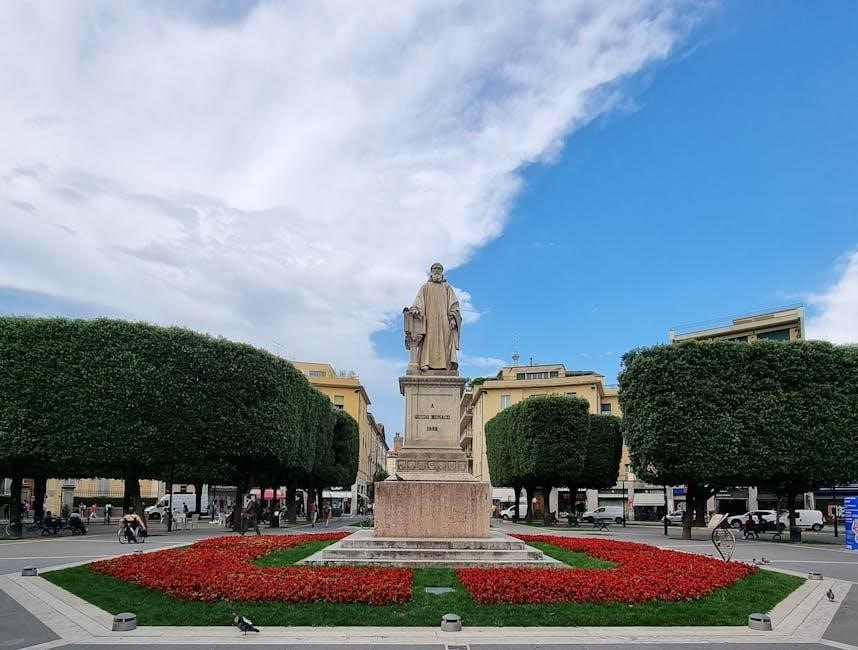
Themes and Symbolism
“Life is Beautiful” explores themes of hope, resilience, and the power of imagination. Guido’s humor and optimism symbolize the human spirit’s ability to find light in darkness, embodying hope and resilience.
Use of Humor and Optimism
Guido Orefice’s use of humor and optimism is a central theme in “Life is Beautiful.” Despite the dire circumstances of WWII and the Holocaust, Guido employs humor as a coping mechanism to shield his son from the harsh reality. His ability to find joy and laughter, even in the most despairing situations, exemplifies the human spirit’s capacity for resilience. Through his antics and imaginative storytelling, Guido creates a sense of normalcy and hope for those around him. This optimism not only sustains his own sanity but also inspires others to hold onto hope. The film portrays humor as a powerful tool for survival, highlighting how Guido’s unwavering positivity transforms even the bleakest moments into opportunities for connection and joy. His character serves as a timeless reminder of the transformative power of optimism in the face of adversity.
Representation of Resilience and Hope
Guido Orefice’s character in “Life is Beautiful” is a profound representation of resilience and hope amidst unimaginable adversity. Despite being imprisoned in a concentration camp during WWII, Guido refuses to surrender to despair. He embodies resilience through his unwavering determination to protect his son, Giosue, and create a sense of normalcy in the most brutal environment. By inventing games and imaginative stories, Guido transforms the horrors of the camp into a fantastical reality, shielding his child from the truth. His hope is not passive; it is an active choice to find meaning and purpose even in the darkest moments. Guido’s resilience inspires those around him, showing that the human spirit can endure even the most oppressive conditions. Through his character, the film underscores the idea that hope is not a naive optimism but a courageous decision to keep moving forward, no matter the odds.
Symbols and Metaphors in the Story
In “Life is Beautiful,” Guido Orefice’s imagination transforms the brutal realities of a WWII concentration camp into a fantastical game, symbolizing resilience and hope. The camp itself serves as a metaphor for the oppressive forces of fascism, while Guido’s invented “points system” represents his attempt to impose meaning and normalcy on an absurd world. The tank Giosue discovers at the end symbolizes liberation and the triumph of innocence. Guido’s humor and creativity act as metaphors for the human spirit’s ability to endure suffering by finding beauty in despair. These symbols underscore the film’s themes of hope and resilience, showing how imagination can transcend even the darkest circumstances.
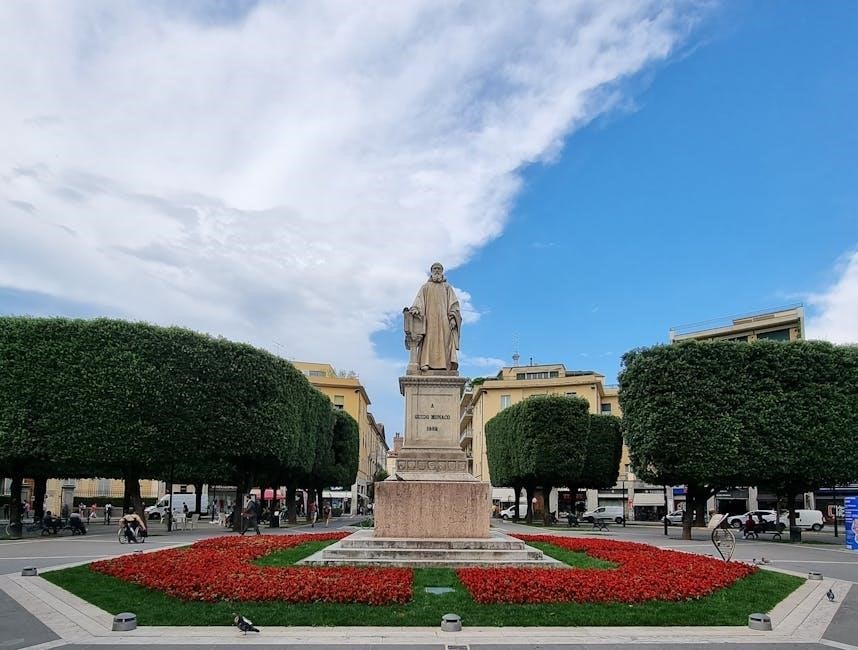
Impact on Audiences
Guido Orefice’s story resonated deeply with audiences, evoking powerful emotions and inspiring hope. His humor and resilience made the film a cultural phenomenon, leaving a lasting impression on viewers worldwide.
Emotional Response and Engagement
Guido Orefice’s story evokes profound emotional resonance, captivating audiences with its unique blend of humor, hope, and heartbreak. His ability to find light in darkness creates a deep connection with viewers, making his journey deeply relatable and unforgettable.
The film’s portrayal of Guido’s unwavering optimism, especially in protecting his son, tugs at the heartstrings, leaving audiences tearful yet inspired. His humor serves as a coping mechanism, reminding viewers of the power of resilience in the face of despair.
The emotional depth of Guido’s character fosters engagement, as audiences root for his survival and marvel at his creativity. His story lingers long after the credits roll, leaving a lasting impression on those who experience it.
Cultural Significance and Reception
Guido Orefice’s story in “Life is Beautiful” has left an indelible mark on global culture, resonating with audiences worldwide. The film’s unique balance of humor, hope, and tragedy captivated viewers, earning widespread critical acclaim and numerous awards.
The character’s portrayal by Roberto Benigni became iconic, symbolizing the human spirit’s capacity to find light in darkness. The film’s international appeal bridged cultural divides, making it a timeless classic and a source of inspiration for many.
Its cultural significance lies in its ability to address the Holocaust with sensitivity and humor, sparking important discussions about resilience and hope. “Life is Beautiful” remains a cherished cultural treasure, continuing to educate and inspire new generations about the power of the human spirit.
Legacy in Modern Cinema
Guido Orefice’s story in “Life is Beautiful” has profoundly influenced modern cinema, inspiring filmmakers to explore the balance of humor and tragedy. Roberto Benigni’s portrayal of Guido became a landmark performance, showcasing how comedy can illuminate even the darkest historical contexts.
The film’s innovative storytelling and emotional depth have set a benchmark for narratives addressing sensitive topics like the Holocaust. Many contemporary directors have cited “Life is Beautiful” as an inspiration, particularly in blending humor with poignant themes.
Guido’s legacy lies in his universal appeal, transcending cultural boundaries and resonating with global audiences. The film’s success has encouraged creators to experiment with unconventional storytelling, proving that hope and resilience can be powerful themes in cinema.
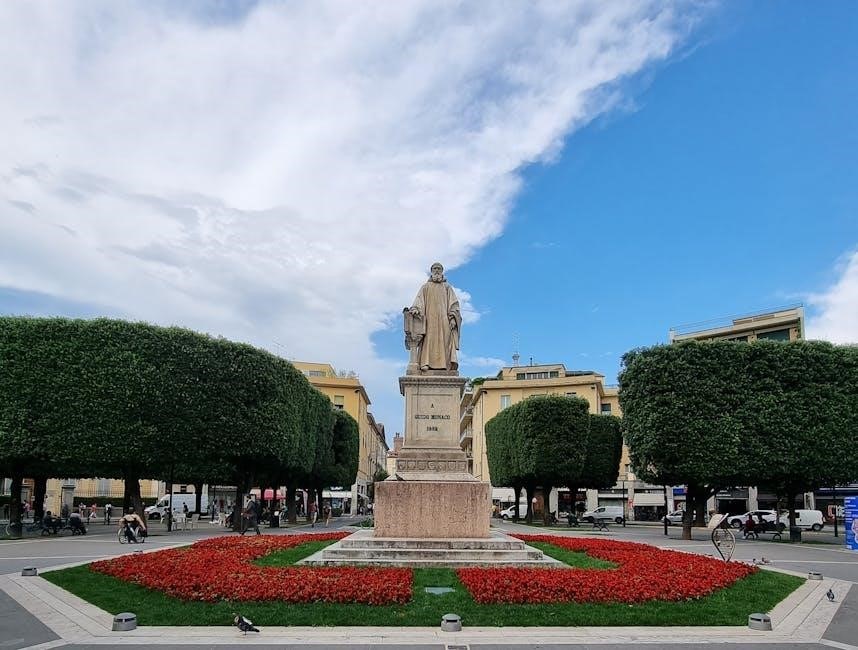
Legacy and Remembrance
Guido Orefice is remembered for his unwavering hope and resilience, inspiring tributes and memorials in films and literature. His story continues to educate future generations about the Holocaust’s impact and humanity’s strength.
Influence on Subsequent Works
Guido Orefice’s story has profoundly influenced subsequent works by showcasing the power of hope and humor in dire circumstances. His character, brought to life by Roberto Benigni in “Life is Beautiful,” has inspired filmmakers and writers to explore similar themes of resilience and optimism. Many narratives now incorporate elements of humor as a coping mechanism, reflecting Guido’s legacy. The film’s unique balance of tragedy and comedy has set a precedent for storytelling, encouraging creators to approach heavy subjects with sensitivity and lightness. Additionally, Guido’s imaginative approach to protecting his son has inspired characters in other films and literature, emphasizing the importance of maintaining humanity during hardship. His influence continues to resonate, reminding audiences of the strength found in hope and the enduring impact of a well-crafted story.
Memorialization and Tributes
Guido Orefice’s legacy has been immortalized through the film “Life is Beautiful,” which serves as a timeless tribute to his spirit and resilience. The character’s story has resonated deeply with audiences, inspiring countless tributes in the form of literary works, artistic interpretations, and public discussions. Many have praised Roberto Benigni’s portrayal, highlighting how his performance captures the essence of Guido’s optimism and humanity. The film itself has become a cultural touchstone, often celebrated for its unique approach to addressing the horrors of war through humor and hope. Guido’s memory lives on as a symbol of strength and creativity in the face of adversity, continuing to inspire new generations to reflect on the power of the human spirit. His story remains a poignant reminder of the enduring impact of love, hope, and resilience.
Educational Value and Awareness
Guido Orefice’s story, as depicted in “Life is Beautiful,” offers profound educational value by illustrating the human capacity for resilience and hope during unimaginable hardship. The film serves as a powerful tool for Holocaust education, providing a unique perspective on the atrocities of World War II while maintaining a focus on the dignity and strength of the human spirit. It encourages viewers to reflect on themes of tolerance, empathy, and the importance of preserving humanity in the face of oppression. The character’s optimism and creativity offer valuable lessons in emotional intelligence and the power of storytelling. By exploring Guido’s experiences, educators can foster discussions on historical context, moral courage, and the enduring impact of hope. This makes “Life is Beautiful” a significant resource for raising awareness about the Holocaust and its lessons for future generations.
Guido Orefice’s legacy endures as a symbol of hope and resilience. His story, masterfully portrayed by Roberto Benigni in “Life is Beautiful,” remains a powerful reminder of humanity’s strength during adversity, earning widespread acclaim and becoming a timeless classic in cinema history.
Guido Orefice, portrayed by Roberto Benigni in “Life is Beautiful,” is a testament to the human spirit’s capacity for resilience and hope. As a Jewish man living in Italy during World War II, Guido’s story transcends the horrors of the Holocaust, offering a profound exploration of humanity. His unwavering optimism, humor, and creativity in protecting his son, Giosuè, from the atrocities of the concentration camps underscore his significance. The film’s narrative, centered around Guido’s resourcefulness and love, highlights the power of imagination as a survival tool. Guido’s character has become iconic, symbolizing the strength of the human heart in the face of unimaginable adversity. His legacy endures as a reminder of hope, love, and the enduring impact of one individual’s courage during one of history’s darkest periods.
Final Thoughts and Reflections
Guido Orefice’s story, as depicted in “Life is Beautiful,” leaves a lasting impact on audiences by blending tragedy with hope. His ability to shield his son from the harsh realities of the Holocaust through imagination and humor underscores the power of resilience. Guido’s character, portrayed by Roberto Benigni, serves as a universal symbol of love, hope, and the human spirit’s capacity to endure. The film’s message transcends time, reminding us of the importance of maintaining dignity and optimism in the face of adversity. Guido’s legacy lies not only in his personal story but in the broader cultural and historical context he represents. His journey invites reflection on the human condition, highlighting the strength found in love, creativity, and hope. Through Guido, we are reminded that even in darkness, the light of humanity can prevail, making his story a timeless inspiration.
